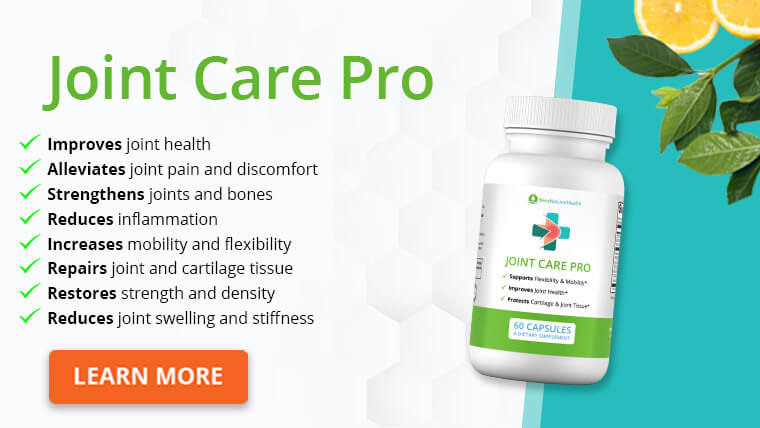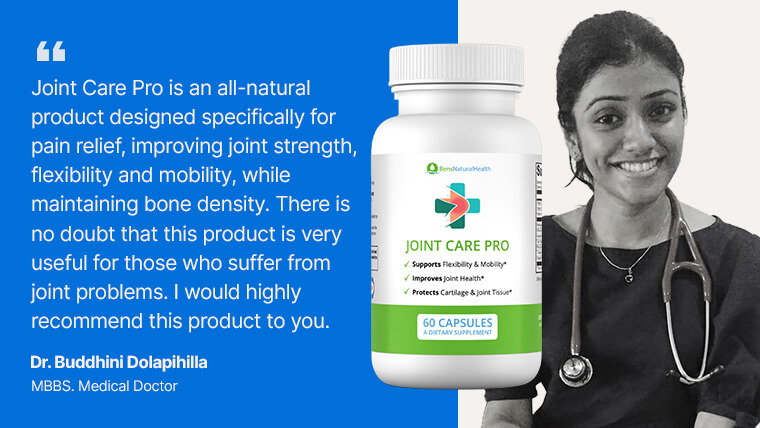Excellent mobility means you can move all body parts in the full range of motion.
Hence, mobility refers to your active range of motion, such as moving your arms, legs, and torso without back pain or difficulty.
But nowadays, our lifestyles make us sit much more than we move around.
For example, most individuals spend more time sitting at a desk than practicing any exercise. Yet, our bodies are not built for such an utterly sedentary existence.
Mobility can impact everything, including our capacity to have a fulfilling life. It can also promote healthy aging as it relates to the basic human need for physical movement.
In this article, we explore the signs of decreased mobility, why mobility is important, how to improve mobility, what the best mobility exercises are, how often to practice such exercises, and how long it takes to improve mobility.
What is mobility?
Mobility determines how easily we’re able to move. It stems from the musculoskeletal system that supports you, gives you posture, and helps you move.
This system provides your body with a framework and comprises your bones and joints. It also includes muscles, tendons, and ligaments.
The parts of the musculoskeletal system grow and change throughout life and are influenced by our movement, posture, joint mobility, and stability.
Mobility is how easily your joints can move in their sockets. But as we age, our joints become sore and more challenging to move.
Since mobility is essential for many everyday activities, we should emphasize moving freely and functionally while preserving joint stability and muscular strength.
Unfortunately, a sedentary lifestyle and age-related problems such as arthritis, sports injuries, or accidents can impair mobility.
The number of persons suffering from aches and pains reflects this shift. That is why improving general flexibility and mobility is necessary.
Signs of decreased mobility
Naturally, mobility declines with age, and the most complex and often demanding tasks are first affected. Being less mobile at any age might be aggravating, especially if you’re used to being quite active.
It may reduce your quality of life as you grow less able to participate in activities you used to do. In addition, as a result of becoming less active, some persons face additional physical and mental issues, such as weight gain, low mood, isolation, depression, and anxiety.
For most people, walking requires just conscious thinking. But the lower limbs are often affected in the initial phases of declining mobility. Difficulty walking compromises physical safety and emotional well-being.
Other signs that may indicate decreased mobility include:
- stiffness in joints when moving them through their normal ranges of motion
- feeling uncomfortable when sitting for long periods
- having trouble getting up from a seated position due to muscle weakness
- feeling unsteady on feet while walking
- difficulty with basic daily tasks such as climbing stairs or carrying groceries.
One of the earliest indications of diminishing mobility is when people try mild to strenuous exercises, such as walking longer distances or sprinting, and realize it has become very difficult or impossible. Running issues can already be a problem in the middle ages.
However, it is reassuring to note that young and older people can correct mobility problems by developing healthy lifestyle changes before task difficulties or severe illness begins.

Why is mobility important?
Mobility movements influence many aspects of our lives and livelihoods. It is essential because it allows us to maintain our independence and perform daily activities efficiently, including simple tasks like bending down to tie our shoelaces to more advanced skills like practicing martial arts or complicated dances.
In addition, out-of-home mobility is necessary to access commodities, use neighborhood facilities, and participate in meaningful social, cultural, and physical activities.
Mobility also promotes healthy aging as it relates to the basic human need for physical movement. That’s why it’s best to address mobility issues as early as possible.
Best mobility exercises
The adage “use it or lose it” applies to mobility. Thus, the more you move, the better your mobility will be. However, there are proven exercise routines to enhance anyone’s mobility.
For example, squats count as one of the leg mobility exercises. It burns calories and may aid in weight loss.
Squats also reduce the likelihood of knee and ankle injuries. Most significantly, the squatting action strengthens your tendons, bones, and ligaments around your leg muscles when you work out.
Remember, the best mobility exercises typically involve stretching muscles around joints and performing dynamic movements challenging balance and stability.
Here is a list of mobility training exercises you can try that help with mobility:
1) Standing against a wall
More ankle mobility leads to better balance, fewer falls, and improved performance during squats and deadlifts.
You can achieve this by standing tall against a wall, putting one hand on the wall for support, and then rocking forward onto your toes, forming a tip-toe stance. Finally, return to the stage gradually and repeat.
2) Leg swings
Leg swings work the thighs, calves, and ankles, which helps to increase mobility in these regions. You can do leg swings in a variety of ways.
A straightforward way is to start standing parallel to something supporting your weight, such as a wall. Then lift your right leg to the side so your left foot is on the ground, and place one hand on the surface. Begin swinging the right leg forth and back.
Perform 10 to 12 reps, swap sides, and repeat with the opposite leg. Alternatively, stand with your arms wide for an added challenge instead of utilizing something to support your weight.
3) Child’s pose and downward-facing dog
Kneel on the floor and lower your hips toward your heels. As you reach for the floor, let your torso fall over your knees and your head fall between your arms. That position is Child’s pose; you should hold it for a few deep breaths.
After that, shift your weight forward to a tabletop position until your shoulders are over your wrists and hips are over your knees. Flip your toes under and drive your feet into the floor, then extend your arms, so your hips rise.
Then create a triangle with the ground by moving your chest through your arms and straightening your legs. Take a few deep breaths and slowly release your knees to the floor, untucking your toes and returning to Child’s pose while stretching through the body.
Repeat three times total while taking at least three to four deep breaths per move.
4) Hip Opener
Your hip joint comprises a ball and socket that may move in all directions. Warming up the hip and surrounding muscles before any activity is essential since they contribute significantly to balance and stability.
First, start by standing with your feet hip-width apart. Then, firmly place your feet on the ground and raise your left knee to your chest.
Next, create a circle with your left knee, moving it up and across your body before bringing it to the side and down. Next, put your left foot on the floor and do the same on the right.
Repeat ten times, then move your legs in the opposite direction by bringing your leg out to the side first, then across your body.
5) Hitchhiker
Go on your hands and knees in Tabletop posture, with your wrists below your shoulders and your knees below your hips.
Make a fist with your right hand, thumb pointing up in the Hitchhiker position, and raise your right arm to shoulder height. Lower to begin, then repeat 8 to 12 times. Repeat on the other side.
6) Frog Pose to Deep Squat
For this exercise, stand with your feet slightly wider than your shoulders and your toes turned out. Sit back to the lower body until your thighs are parallel to the floor or as near to parallel as you can manage.
Maintain this position for a split second before transferring your weight and resting your hands on the floor. Spread your knees wider as you lower yourself, and if feasible, bring your chest to the floor.
Use your arms to support yourself if the strain in your inner thighs and groin is too strong. Pause for a second before returning to the deep squat with your toes turned out. You are standing up slowly. Perform this exercise 8 to 12 times more.
7) Lunges
The lunge stretch lengthens and increases the flexibility of the psoas muscle’s hip flexors. These muscles can be found on both sides of the body.
Many people have tight hip flexors due to sitting for lengthy periods. Tight hip muscles have a limited range of motion and are more prone to injury.
Here’s how to do this crucial hip mobility exercise: Stand tall with your right foot forward and your left leg and foot behind. Next, get into a forward lunge position by bending the right knee so that the thigh is parallel to the ground.
Then put your hands on your right knee. Begin by pushing down with your hands to propel your hips forward until you feel a tiny stretch in your left thigh. Keep this posture for 20 minutes.
How often should you do mobility exercises?
Injuries can arise when specific muscles are not utilized effectively due to extended sitting or poor form during workouts. However, most people can safely do some form of light stretching or mobility drills every day.
Ensure you perform the best mobility exercises with the correct techniques to engage your joints and muscles.
You can also hire a qualified trainer if you face issues with the proper mobility routines or mobility exercises.
Regardless, if you have any pre-existing injuries, please consult an experienced physiotherapist before beginning any new exercise program. They can advise what type of exercises would best suit your needs and current condition.

How long does it take to improve mobility?
How long does it take to increase mobility? It depends on the individual, the level of physical fitness before beginning the program, and the dedication to achieve the desired results.
Nonetheless, significant results should be visible after a few weeks of consistent practice, especially with full-body mobility exercises.
It takes time to become flexible, but it is well worth the effort since it will help you prevent workout-related injuries such as muscular strains, rips, and sprains because you will have a better range of motion during your workouts.
Other ways to improve mobility
How to improve mobility? One of the best ways is to start moving more frequently and dynamically and practicing mobility exercises for beginners.
However, there are other ways to improve mobility, such as the following:
- Maintain a healthy weight and a healthy diet.
- Stretch regularly.
- Stay active.
- Massages.
- Swimming.
- Check the possible influence of medications.
- Test vision and hearing regularly.
- Make sure proper footwear is worn.
- Create opportunities for socializing actively.
- Medical alert services can provide peace of mind for severe cases.
- Tell the doctor about mobility problems, and mention any falls.
- Special exercises like Tai Chi, stretching, and breathing exercises.
Ben’s Joint Care Pro
Joint Care Pro, our joint health supplement, contains natural, proven ingredients that support joint care and joint health.

It is designed to improve mobility and flexibility, reduce joint pain, restore joint strength, protect cartilage and joint tissue, and rebuild strength and density.
Conclusion
Mobility exercise is a series of motions, training, and stretches to improve the range of motion in all joints and keep muscle fibers strong and fluid.
Regular functional mobility training is the key to excellent stability and balance throughout the body. It is also essential to foster healthy attitudes regarding physical activity to achieve excellent mobility.
Frequent mobility exercises might help you enjoy more of your favorite physical activities as you age and should be an essential part of any regular workout routine, no matter what physical activity.
Besides improving your everyday movements, mobility drills in your training program can lower your risk of injury when you practice other exercises such as sports, lifting weights, or biking.
Explore More







